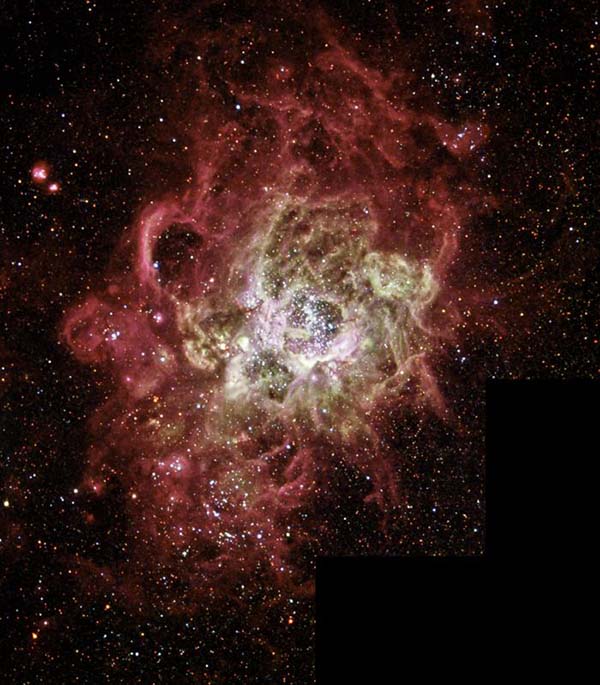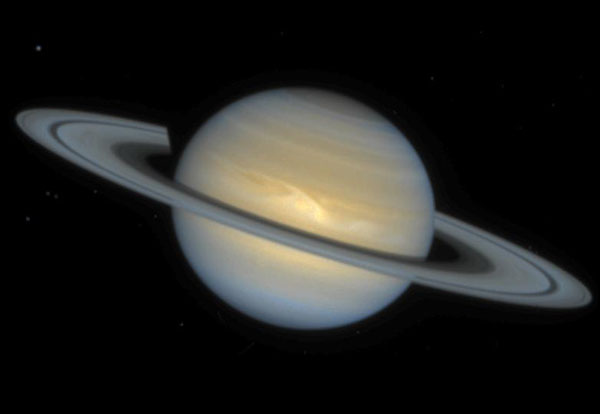For a fleeting moment, I am blind. Standing frozen in the dark, I am afraid to take even a single step while waiting for my pupillary light reflex to kick in. Happy voices murmur in the deep darkness that envelops me. As I begin to dimly make out my surroundings, I look up to a black sky with a billion celestial objects bisected by the Milky Way and circumscribed by the mountain peaks that surround me. Another moonless, mid-summer night and I’ve returned to the field to continue a multi-year ethnographic study of North American avocational astronomers at their annual “star party.”
For those unfamiliar, star parties are ritualized stargazing events sponsored and hosted by recreational astronomy clubs that bring participants together in remote locations to observe the night sky. Part science, part party, star parties serve as a way of connecting with others around a telescope. Beyond simply forms of serious leisure, star parties also serve as venues for informal learning and opportunities for community-building.

M33, the Triangulum galaxy. The view from terrestrial telescopes are far less impressive than this Hubble image, yet the thrill of seeing it at a star party is rather inexplicable. (Photo courtesy NASA)
Dark Nights, Red Lights
Smaller star parties typically draw a dozen or so observers and are often organized for the financial benefit of local astronomy clubs or school groups. These are typically only one-night events. Larger star parties can last a week or more and attract dozens or even hundreds of participants from across the country and around the world. Many of these larger star parties are annual events that have become part of the cultural landscape of amateur astronomy in the United States and are more than just stargazing. At larger star parties, it is increasingly common to have events scheduled during the daylight hours that include exhibitions of home-made telescopes and telescope-building, scientific lectures, astronomical equipment swap meets, tours of astronomical observatories, and even fundraising raffles. Sociable, but controlled, participants’ behavior at star parties is strictly regulated by rules established by the organizing group which dictate nearly every aspect of the star party from the times one is allowed to run electrical generators to where participants can park and drive to what kinds of lights (red lights only) are allowed on the star party grounds after dark. Consumption of alcohol, while not prohibited, is discreet. Under these conditions, star parties thrive even if they really have little to do with the contemporary scientific work of astronomy.
What Am I Learning?
Several years of data gathering via participant observation has taught me much about how the North American avocational astronomy functions as a community of practice. This report, however, examines just one of the preliminary conclusions I’m currently exploring: forms of participation and authority.
Participation in a star party is ostensibly achieved simply by showing up, paying the registration fee, wandering out onto the observing field, and looking up. Before long, some gregarious telescope owner will likely ask if you would like to take a peek at the rings of Saturn, M33, the Triangulum galaxy, or the star cluster Coma Bernices through his or her telescope. The social nature of the party breeds amity and sharing of equipment and information. However, the forms of participation demonstrated by individuals at star parties can be complex. For example, while star party participants are predominantly white, well-educated, upper middle-class males, the darkness and intentional social nature of the event seems to transcend conventional boundaries of race, class, and gender, allowing education, age, and experience to play more central roles in participation and forms of authority at star party events.

Saturn as seen by Hubble. Photo credit: Reta Beebe (New Mexico State University), D. Gilmore, L. Bergeron (STScI), and NASA.
Full and active star party participation involves a subtle process of social interaction that requires participants to skillfully negotiate issues of practical and knowledge-based authority. Scientific knowledge, educational achievement, and professional astronomer status holds high value, but there are few professional astronomers in attendance. Absent such conventional status markers, it is up to the participants to sort out who’s who. Often this comes in the form of understated interpersonal challenges. These challenges of another participant’s technical knowledge can be as subtle as asking, “Do you know what that is?” or “Have you ever seen that before?” as someone looks through the telescope eyepiece at a celestial object. Many first encounters begin with recitations of what might be called one’s “observational achievements.” That is, short monologues of celestial objects they’ve observed, how long they’ve been stargazing, and other sorts of astronomy-related personal stats. The goal of such interactions seems to be to establish your astronomical authority as quickly as possible.
In some cases, authority emerges more through practice than principle. As a result, some star party social interactions are often no less exhibitions of technical or practical expertise than they are intellectual information exchanges. The functionality of a homemade telescope or the relative quality or clarity of the images those telescopes produce are just as fundamental a basis for the negotiation of authority as are intellectual abilities. The skill demonstrated in building and using a telescope to locate and then track a stellar object is second only to knowing the name, Messier object number, and astrophysical particulars of the object.
Combined, these forms of knowledge–practical and scientific–form the basis for what might be called craft authority among star party participants, which seems to differ substantially from socio-cultural authority as it entails forms of authority based on more familiar representations like gender, educational achievement, or economic status. Craft authority is respected and sought out. In this way, star parties are excellent example of contemporary scientific communities of practice, which Wenger, et al. defines as:
a group of people who share a concern, a set of problems, or a passion about a topic, and who deepen their knowledge and expertise in this area by interacting on an ongoing basis. (2002, 4)
Studying star parties as scientific communities of practice is just one way of looking at people in what has become a popular venue for disconnecting, albeit temporarily, from the earthly Webs, worries, and woes of modern life and connecting with the Universe. My ethnographic research effort seeks to understand the nature of that disconnection/connection and, more broadly, how the community of practice model might be a useful tool for social scientists in characterizing and understanding other such avocational and occupational communities of science.
Wenger, Etienne, Richard McDermott, and William Snyder. 2002. Cultivating communities of practice: a guide to managing knowledge. Boston: Harvard Business School Press.
See also: Wenger, Etienne. 1998. Communities of practice: Learning, meaning and identity. New York: Cambridge University Press.

5 Comments
I found this post to be very interesting. It made me want to learn more about star parties and the informal learning that is exchanged during these events.
Also, the discussion of negotiating interpersonal expertise resembles a dynamic I have called “performing technical affiliation” which has to do with how people perform alignment to particular kinds of technological ideas and related cultural forms. Part of this negotiation involves establishing a kind of micro-hierarchy between interactants, such that the performer attempts to situate him- or herself higher than their interlocutor. In the example in the post, it is done through questions that are meant to suss out whether the interactant knows as much about the stars as the person asking questions.
Such bids for relative expertise do not always work; much depends on whether the audience colludes with and ratifies a performer’s bid, but what is interesting is how the negotiation unfolds. If interested in this rubric, the post with a brief write-up is called Performing Technical Affiliation.
My question would be, how does this dynamic compare to such performances, and what are the consequences of jockeying for such expertise? Do people buy into this as a method for displaying and acquiring their own knowledge, or do they feel somewhat alienated when potentially put in a one-down position by the experts?
Keep us posed on this work!
This sounds like really great work! My own ethnography is with professional astronomers, but the study of amateur astronomy is still such a rich territory. I’m wondering if anyone has looked at the intersection between professional and amateur astronomers? I once was at a small meeting with maybe a dozen astronomers and planetary scientists. These are people who devote their lives to looking for (scientific) meaning in the night sky. We were meeting in the American Southwest, and there night sky was crystal clear. But, the professionals couldn’t make out a constellation! One night, the president of the local astronomy club came up (with his telescope) and set up views of various planets and nebulae for us. This struck me as a fascinating moment when the amateur comes to the aid of the professionals, reinvigorating the romance that often gets excluded from daily astronomical work.
Lisa,
I couldn’t agree more. The topic is rich territory for anthropological study. Back in the day, now more than thirty years ago, sociologist Robert Stebbins explored the intersections between amateurs and professionals in astronomy as what he called “serious leisure”. He had several publications exploring the concept, including:
“Looking Downwards: Sociological Images of the Vocation and Avocation of Astronomy,” Journal of Royal Astronomical Society of Canada, 75 (February, 1981): 2-14. Reprinted in Southern Stars: Journal of the Royal Astronomical Society of New Zealand, 29 (June, 1982): 177-189.
and
“Amateur and Professional Astronomers: A Study of Their Interrelationships,” Urban Life, 10 (January, 1982): 433-454.
Times may have changed, but the passion endures.
I’m really interested in how the darkness works. You mention it in passing–do you think it really grants access to people of different backgrounds/with different kinds of social markers, or does it just seem as if it should?
That’s a very good question. I can definitely attest to a lessened of concern for issues of race, class, and gender in the social mixing and interpersonal communications among participants, especially in cases where I knew there were multi-racial/multi-ethnic groups. There are, of course, certain audible markers (feminine versus masculine voices, rhetorical devices and language) that would probably betray the speaker, but I witnessed levels of camaraderie and mutual respect in the deep darkness that were manifestly less evident in the daylight hours.
It may be that in the process of “performing technical affiliation,” as Patricia Lange has so fittingly named this negotiation process, participants are so caught up in the process of jockeying for authority that matters of race, class and gender are simply set aside for the moment in favor of other issues.
1 Trackback